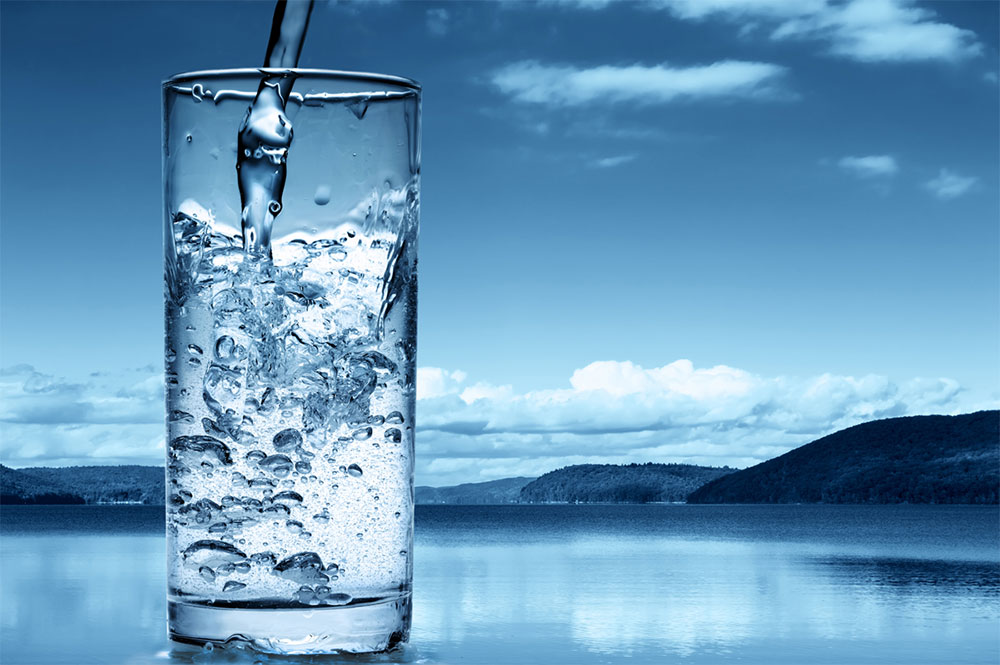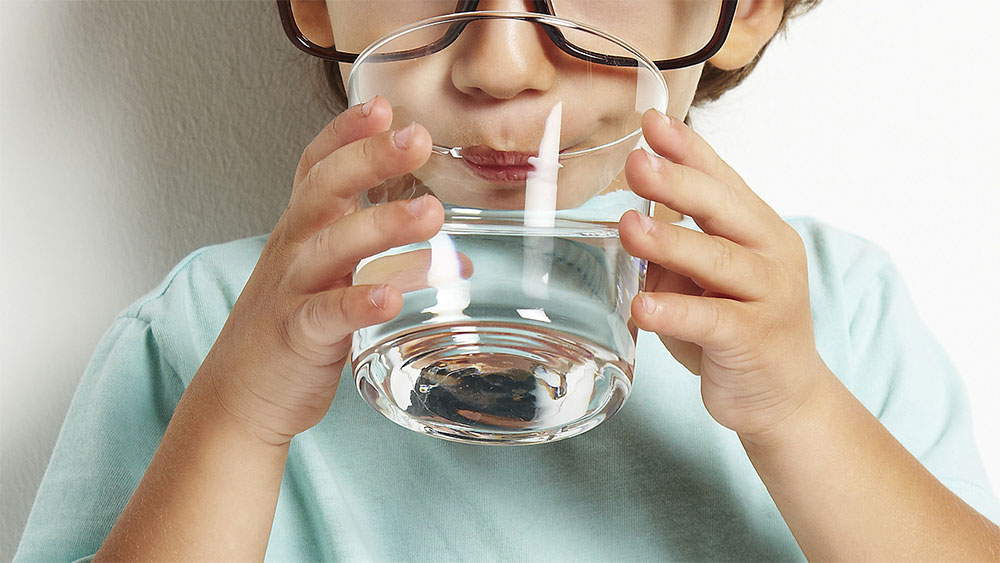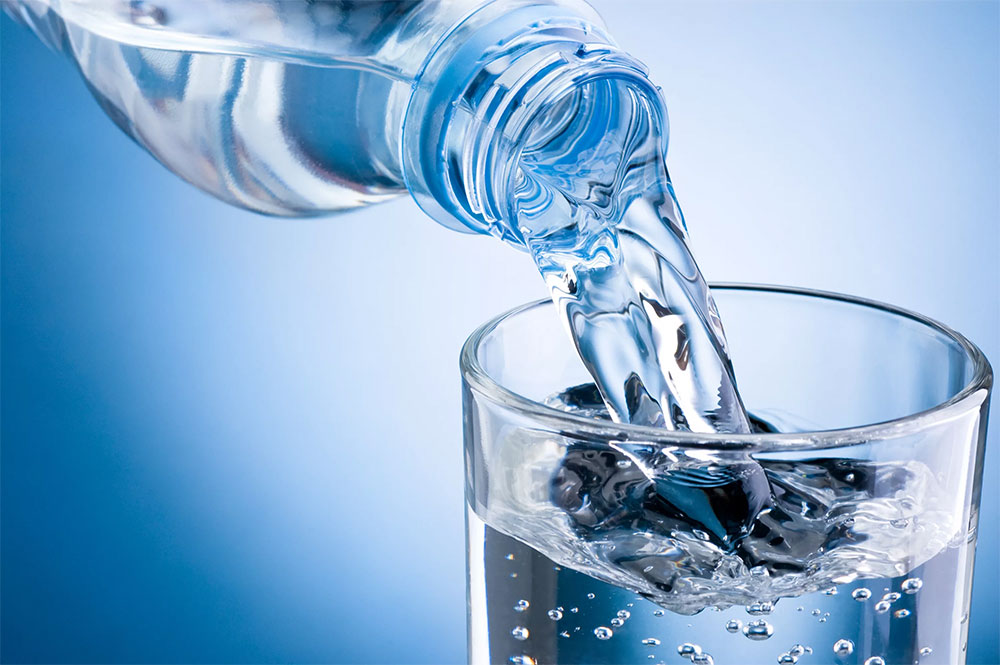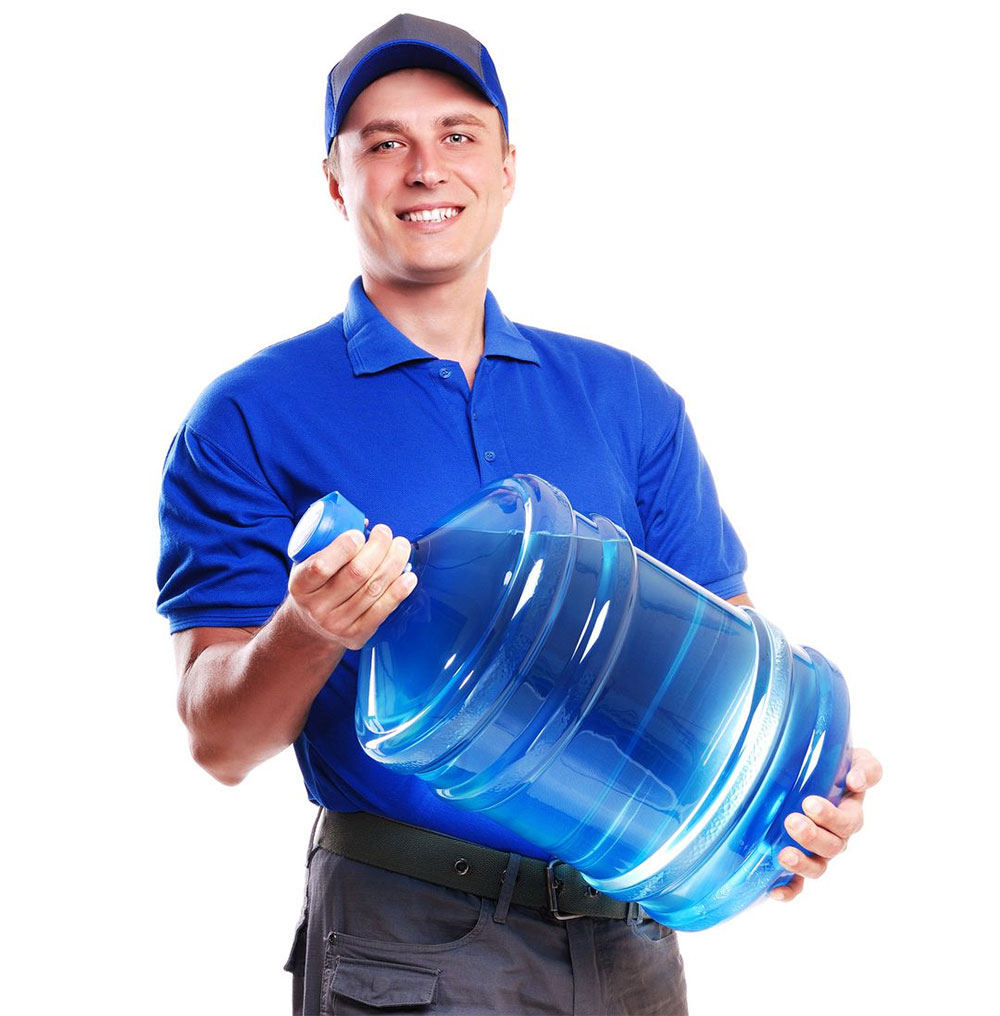Sections of the site
Editor's Choice:
- Business with China - where to start, how to find suppliers + TOP-15 goods from China and a list of trading platforms
- Where to invest 1000 dollars
- Three common misconceptions and six life tips
- How can maternity capital be used - for what needs can the maternity capital funds be spent
- Caramel apples - a new business idea
- Ready-made business plan for beginners
- Gypsum stone tile: 7 advantages of the material
- How to buy the best and interesting unusual goods from China for home, gifts and sales on Aliexpress in Russian?
- Business plan for opening a bathhouse
- Where to spend maternity capital before the child is 3 years old
Advertising
| Own business: how to open a tea shop |
|
* Calculations use average data for Russia Starting investments: from 200 000 ₽ (vending) Revenue: from 270 000 - 375 000 ₽ Net profit: from 100 000 ₽ Payback period: Every year the demand for drinking water increases. Therefore, business on the water is relevant and promising. We will look at how to make money out of water: from the simplest ideas to large-scale production. Drinking tap water is not possible in many regions. This problem is especially acute for residents of large cities, where drinking running water is harmful to health. Installed filters do not solve the problem, because they only purify water, but do not make it useful for the human body. The only way out is bottled water from natural sources, artesian wells. Trending Product 2019 Thousands of ideas for quick money. All world experience in your pocket.. Therefore, the Russians have long stopped drinking untreated running water, having felt the difference. Ordering water has become commonplace in almost all offices and businesses, and many families order water at home. After all, human health depends on the quality of water, and people do not save on health. The cost of bottled water is acceptable, and this product is in great demand. So the business on the water is a relevant and profitable business. Every year the need for clean drinking water increases, and the number of consumers increases. Every third family in a big city has a bottled water cooler in their apartment. According to experts, about 65 million bottled water is sold in Moscow alone a year. RBC experts predict that the annual growth of the drinking water market will be about 15-16%. At the moment, bottled water already accounts for 2/3 of the non-alcoholic products market. The service direction for the delivery of water in bottles of 5 and 19 liters to offices and private apartments is also developing at a faster pace. The growth of this market segment is 20-30% per year. It is expected that the market will slow down its growth only by 2020, but this will require increasing the production capacity of water by 3-4 times. Therefore, there is still time to find your niche and enter the market. But it should be taken into account that the competition in the drinking water market is already quite high. A novice in this business will have to fight for his clients. A simple price reduction will not solve the issue of competition: prices are already low, and there is no point in working at a loss. Therefore, if you decide to implement this idea, you will need a business plan to plan all stages of enterprise development: from determining the business format to methods of promotion in the market. There are different ways to make money on the water. You can only engage in the extraction of water from a well, only cleaning, or only the delivery of water of other brands. There is also an option to open a point of sale of water for bottling or a water pavilion. There are a lot of options - it all depends on the structure of the market and the available capital. The minimum cost for opening such a business will be 200 thousand rubles - this amount will be enough to organize a water delivery company or open a kiosk. If you want to establish a full cycle of water production - from extraction to delivery of products - then get ready for more significant costs. Let's try to figure out how much a business on the water costs and what it will take. Let's start with the simplest format, which will require minimal investment. Sale of drinking water through vending machinesSelling drinking water through vending machines is an interesting and relatively new idea. People are used to buying hot drinks and snacks in vending machines, then why not sell drinking water for bottling? Vending allows you to reduce the cost of 1 liter of water by 4 times. Therefore, with the help of such a system, you can reduce prices and attract buyers. In addition, for a competitive market, this option seems to be one of the most suitable. According to experts, this niche is free in 80% of Russian cities.
How the system works The machine has a water tank. The buyer brings the container with him, makes the necessary amount of money, substitutes a bottle and draws water. Everything is simple. Water vending machines have an anti-vandal housing, a tank with a supply of water, a filling system for consumer containers, as well as a cash and card payment system. By means of a billing system for remote access, you can monitor the operation of the machine. The data reflects the history of collections, the amount accumulated in the machine. Through this system, it is possible to block the machine, monitor the temperature in the machine and receive information about the state of the equipment. Ready-made ideas for your business The range of machines is quite wide. They differ in design and performance (from 750 to 3000 liters / day). The machines can function stably at temperatures from -30 to +35 °C. Finding a manufacturer and purchasing equipment is not difficult. The average cost of one vending machine is 180 thousand rubles. Maintaining the device is easy if you do everything on time. Basically, the service consists in replacing the cartridge once every six months and replacing the sterilizer (once a year). What are the features of vending trade in water The income of a vending machine significantly depends on a good location. Places for installing vending machines with water: in the courtyards of residential complexes; in crowded places from stops to residential buildings; at the points of "exit" from the road to the sleeping area; in actively visited shops, shopping centers, markets; in the hallways of apartment buildings. The number of installed devices must be correlated with the number of potential buyers: approximately one machine per five high-rise buildings. You need to make sure that there is always water in the machine, otherwise you will lose some of your customers. Despite the fact that the main advertising engine is the successful location of devices, it is necessary to consider other options for promotion. For example, you can distribute leaflets, place advertisements in elevators and on bulletin boards, leave promotional leaflets in mailboxes, and brightly decorate the machine itself so that it attracts the attention of passers-by. Advantages and disadvantages of selling water through a vending machine
How much can you earn selling water through vending machines According to statistics, about 10 families will use the services of one device every day, purchasing about 250 liters of water per month. That is, in a month the machine is able to sell 10 * 250 * 30 = 75,000 liters. With an average price of 5 rubles. per liter, the revenue of one device will be: 75,000 * 5 \u003d 375,000 rubles. And if you open a whole network of vending machines in the city, you can earn many times more. Such a business can pay off within 3-4 months. This time is enough for potential consumers to notice the devices, get used to them and appreciate the convenience of their use.
Water kiosk or pavilionA more complex version of the drinking water trade is the opening of a water pavilion. The water pavilion is usually located in shopping centers or in free-standing kiosks in the parking area of shopping centers. Documents for opening a water pavilion:
documents for a piece of land where a kiosk will be installed, or a room where a pavilion will be opened; approval of the type of object, layout of the object, permission to install a kiosk or pavilion in the department of urban planning architecture; sanitary passport of the object of trade, confirming compliance with all sanitary standards and ensuring the implementation of all preventive measures (disinfection, deratization, disinsection); sanitary and epidemiological documentation, including conclusions from Rospotrebnadzor; other documents (contracts for the removal of solid waste, technical waste, etc.). What equipment is needed for a water kiosk The kiosk for the sale of drinking water for bottling consists of a metal frame and a concrete base. It must be installed on a horizontal sand bed at least 200 mm thick. The outer shell, made of RAL-coated galvanized sheet, gives the kiosk an attractive appearance. You can place ads on it to attract additional attention. The stall is insulated and protected from moisture. Commercial stained-glass windows are equipped with metal shutters. Ready-made ideas for your business The kiosk for the sale of water consists of the kiosk itself and a container installed on it. The capacity is 5 cu. m. Filling the tank with water is carried out through a pipe system through a technological door provided in the wall of the kiosk. A high pressure pump is used to supply liquids (usually not included in the equipment and purchased separately). Water is sold to consumers through the dispensing window. To install such a kiosk, you will need approval from the owner of the land and 6 sq.m. free area. To date, there are several manufacturers from which you can purchase such equipment. The average cost of a kiosk for the sale of drinking water is 300 thousand rubles. The average volume of sales through such a kiosk is 1.1 tons of water per day. When choosing equipment, it is important to ensure that the manufacturer provides appropriate quality certificates for all materials that come into contact with potable water. In addition to the kiosk building, you need to purchase a container for water. 5 liter plastic bottles. The average cost of a container is 120 rubles / piece. Service life - up to 1 year.
Where to find a drinking water supplier To open a kiosk for bottling drinking water, you need to find a supplier of quality products. The market offers a wide range of drinking water producers. Before concluding a cooperation agreement, it is recommended that you familiarize yourself with the quality of water and relevant certificates, the conditions for delivering water to the point of sale, additional conditions for cooperation, as well as feedback from entrepreneurs and consumers. Starting investments in opening a water kiosk:
rent of premises (area 7 sq.m.) - 12 thousand rubles; equipment (kiosk, pump, plastic containers) - 350 thousand rubles; purchase of the first batch of goods - 50 thousand rubles. wages for salespeople for the first month of work (2 salespeople working in shifts) - 35 thousand rubles. In total, according to estimates, the entrepreneur will need about 470 thousand rubles to open a pavilion for bottling drinking water. What costs should be taken into account when planning This business, like any other, has its pitfalls. For a water bottling kiosk, there are many costs that are not obvious at first glance, but eat up a significant share of the budget. Therefore, when drawing up a business plan and budgeting, it is recommended to take into account the following costs: transportation costs for the delivery of equipment. Some equipment manufacturers do not include the cost of its delivery in the general price tag. It is necessary to discuss this moment with the manufacturer before signing the contract and choose cooperation with those who are geographically located closer in order to minimize transport costs. Their value can be significant and depends on the mileage, the amount of equipment supplied and other factors; transport costs for the delivery of water. You should also consider how water will be delivered from the manufacturer to the point of sale. For this, water carriers are used. The cost of such a car is 5 million rubles. If you organize a mini-business selling drinking water, there is no need to purchase an expensive car, but you should immediately find out from the manufacturer: at whose expense and under what conditions is water delivered to the point of sale. There is a possibility that you will be responsible for some of the shipping costs. equipment maintenance costs, incl. sanitation of water storage tanks. The frequency of sanitizing is established by the Production Control Program. According to the norms, it is necessary to wash the kiosks once every two months. This is enough to keep the water in the tank clean and safe. The tank is treated in a non-contact way using a special CIP cleaning device designed for internal cleaning of pipe tanks without the need for disassembly. The cost of such equipment is 140 thousand rubles. You can also contact cleaning companies that provide industrial sanitation services. The cost of services can be clarified by sending an application on the website of the cleaning company. kiosk installation and landscaping around the kiosk. In order to install a kiosk, it is necessary to carry out work on pouring the foundation. The cost of installation will be, on average, 15 thousand rubles, including the cost of landscaping the adjacent territory. connection to the mains. Since electricity is required to operate the kiosk, you should budget for the cost of connecting to the power grid. These expenses will amount to approximately 10 thousand rubles. How much can a water kiosk earn The cost of 1 liter of water in a kiosk is slightly higher than in a vending machine. On average, 5 liters of water will cost the buyer 50 rubles. Based on the fact that such a kiosk can sell up to 1000 liters of water per day, the monthly revenue of 1 kiosk will be about 200 * 50 * 30 = 300 (thousand rubles). Given the cost of drinking water and all additional costs, the business will pay off within a year. Advantages and disadvantages of selling water for bottling at a kiosk Delivery of drinking waterOne of the most common businesses on the water can be considered the delivery of bottled drinking water. The potential of this direction is very high, because this type of service is used by both individuals and companies. Water delivery is a simple business. It does not require a license, no special knowledge, no specific equipment. But you should be prepared for a large amount of initial investment, because the main equipment for delivery services is a car. What you need to start a water delivery businessRegister IP. To open a water delivery company, it is better to choose an individual entrepreneur as an individual entrepreneur, indicating the type of activity in accordance with OKVED-2: 36.00.2 "Distribution of water for drinking and industrial needs." As a taxation system, it is recommended to choose the simplified tax system "income minus expenses" at a rate of 6%. Find drinking water suppliers. Before buying water from a manufacturer, you need to check with him the conclusions of the SES and the Ministry of Health. Only then can you conclude an agreement with a bona fide supplier. The approximate price per liter of water is 4-5 rubles. The practice in this business is that a dealer who purchases more than 500 bottles of water per month receives a 50% discount on water, and a dealer with a turnover of more than 1,000 bottles receives a 75% discount. Such bonuses are a great incentive to work harder and look for new clients. We recommend that you check with the manufacturer in advance about the possibility of obtaining discounts. Purchase the necessary equipment. Being engaged in the delivery of water, you must do your job quickly, on time and without damage to the container - customer loyalty depends on this. To arrange delivery, you will need to purchase a Gazelle. This is the most suitable option: it is roomy, unpretentious and relatively economical. Delivery of water to the Gazelle does not bring high costs. In order to start a water delivery business, it is not necessary to purchase new cars. You can save money and buy used. Their cost will be approximately 150 thousand rubles. You can start a business with one car, but you should be prepared for the fact that with the development of the business you will have to replenish the fleet. The required number of vehicles depends on the population of the city where you will be working, the number of clients, transport links in the city, etc. In addition to transport, it is necessary to purchase containers for transporting water. To do this, you will need to purchase 19-liter bottles made of polycarbonate (the shelf life of water in them is 6 months). Their cost is 230-250 rubles / piece. Bottles can be purchased, or you can, after paying a security deposit, rent from a water bottling company. In order to calculate the required number of bottles, you need to know approximately the number of your customers. But please note that loading less than 100 bottles per month will not be very profitable. Consider advertising. Today, the demand for water delivery is quite satisfied with the supply, so it will not be easy to squeeze into a crowded market. You need to figure out why your services will be more attractive to the client than a competitor's water delivery. You can lure a client either with a lower price or better service. The second option is preferable, since too low prices can lead to the fact that you will work at a loss. But a better service will attract both individuals and corporate clients. How can you advertise your services? Advertising in elevators, distribution of leaflets, advertising sticker on the car that makes the delivery. For corporate clients, you can make a price list, a presentation that can be sent by e-mail. Make business cards and promotional printed material. Get ready to spend about 30 thousand rubles on the initial advertising campaign in order to get the first customers as quickly as possible. Arrange a warehouse. Do not forget that you will need a room to store the bottles. For this, a room of 10 sq.m. will suffice. Perhaps the entrepreneur has a suitable premises in the property. Otherwise, you will have to rent a warehouse, which will cost about 5-7 thousand rubles. additional costs. Make a plan of income and expenses. Let it be approximate at the first stages, but even this information will allow you to correctly plan your business. Costs of setting up a water delivery business:
search for water suppliers (transport costs, mobile communication costs, etc.) - 7 thousand rubles; Gazelle car (used) - 150 thousand rubles; bottles 19 l. (200 pieces) - 50 thousand rubles; warehouse equipment - 10 thousand rubles; The total amount of initial investments will be about 257 thousand rubles. In addition, you will have to pay monthly fuel costs (15 thousand rubles), advertising costs (8 thousand rubles), pay salaries to employees (2 drivers working in shifts and 2 operators accepting orders for delivery - 60 thousand rubles .) and taxes (approximately 15 thousand rubles), as well as to purchase drinking water from the manufacturer. You should also not forget about the costs that are incurred once a year: transport maintenance (insurance, repairs, technical inspection) and replacement of plastic containers. These costs will amount to about 120 thousand rubles. First you need to determine the cost of water. It consists of the purchase price of drinking water, transportation costs, and the cost of using containers. It is possible to calculate the cost as close to reality as possible only empirically, when the specified characteristics are known. The approximate cost of 1 liter of water will be 5 rubles, and 19 liters of a bottle - 95 rubles. The retail price of a 19 liter bottle of drinking water is 180 rubles. Based on the fact that the driver will be able to dilute about 50 bottles per day, the daily revenue will be 9 thousand rubles. Then for a month you can count on revenue of 270 thousand rubles. If we subtract all costs from this amount, then the net profit will be about 100 thousand rubles. per month. Ready-made ideas for your business With an increase in the amount of water delivered to 70 bottles (this is the full load of the Gazelle), income will increase to 140 thousand rubles. per month. The annual turnover will be approximately 3.5 million rubles, and the net profit will be 1.5 million. With such a profitability, it will be possible to recoup the initial investment in the first year of operation. Nuances of drinking water delivery To succeed in this business, you must adhere to certain rules and take into account the features: delivery at a convenient time for the client; always strictly follow the delivery schedule; offer only high-quality goods; think carefully about logistics in order to save on transport costs as much as possible. Plan your route so that any unexpected changes, such as cancellation of an order, can minimize the loss of fuel and time. Advantages and disadvantages of a water delivery business In the water business segment, this area is the most difficult one, both in terms of the degree of implementation and financial costs. You can start such a business only if you have sufficient capital. If you are going to open a production of drinking water, you can consider two formats: extract water from a source or purchase raw materials for subsequent water filtration and bottling. You can also open your own water delivery service during production or delegate this authority to dealers.
Before planning the production of drinking water, this process should be considered. It consists of the following steps: study of aquifers of the soil; drilling of wells for water extraction; cleaning through sand and coal filters; saturation with minerals or a decrease in their content; ultraviolet disinfection; saturation with ozone; processing and disinfection of containers and lids; spilling water. The full cycle begins with the search for a source of water. It can be both natural sources (wells, water of rivers, lakes), and city water supply. Practice shows that a well is selected more often. Therefore, before opening a business, preliminary preparation is required - a study of aquifers of the soil. The depth of occurrence of artesian waters varies within 100-1000 m. The site for the object is selected based on construction and transport costs. Preliminary studies begin with the study of maps of general geological exploration. Next, areas of the terrain with the smallest depth of artesian waters are selected - the shallower the depth, the lower the cost of construction work. It should be noted that according to the requirements of the legislation, each site must be used depending on its intended purpose and category. Industrial land is suitable for this activity. It may be possible to purchase a finished well, which will simplify the work. In order to drill an artesian well, it is necessary to order a project for a well at a specialized enterprise, coordinate it with the RCGSEN and Geocenter-Moscow, obtain a drilling permit and an operating license. The cost of drilling a well will be 1-2 thousand rubles. for one meter. The depth of the well can be 100-200 meters, on the basis of which the cost of work will be from 100 to 400 thousand rubles. Artesian water is recommended to be extracted in ecologically clean areas and be sure to analyze water samples. The sample must be sent to the laboratory. The conclusion will show how difficult the next stage of purification will be (it depends on what equipment is required for water purification). After receiving a positive conclusion about the quality, you can get the appropriate permission. Water for sale must comply with the sanitary rules and norms of SanPiN 2.1.4.1116-02 and GOST R 52109-2003. Today in Russia there are many public and private laboratories that conduct water examinations for more than 50 indicators and have the right to issue appropriate conclusions. But the choice of this organization should be approached responsibly, since on the basis of the expertise provided, a decision is made to issue a SanPiN permit. What documentation needs to be collected The main list of documents that will be required to start the production of water and the further operation of the enterprise looks like this: Permission to drill your own well or a cooperation agreement with a water supplier; Contract with an energy company for the use of a separate line for the production of water; The conclusion of the SES on the condition of the premises, the compliance of the equipment with sanitary requirements; For ready-to-use water, a separate quality certificate from the SES should be obtained; Lease agreement for the premises where the production will be located. If the building is owned - a certificate; Business registration documents issued by the Federal Tax Service. As an activity code according to the OKVED-2 classification: 11.07 - "Production of soft drinks, various bottled drinking water." The conclusion of the fire department on the admission to the production of water in the selected room. To save time, you can use the services of special services that will help you quickly collect the entire package of documents. The cost of such services will be about 25 thousand rubles. Thus, about 200 thousand rubles will have to be spent on registering a business and collecting documentation (water analysis, well design, approval of departments, product licensing).
What equipment do you need to buy After the results of the examination are received, you can start selecting equipment. For this, technical requirements for equipment regarding water treatment are drawn up. These documents are sent to suppliers. Try to get advice from entrepreneurs who have long been engaged in the purification and sale of water and other specialists working in related fields. Today, there are many companies on the market for specialized equipment - most of them are Russian or Chinese. The important characteristics of this technique are the time of work with the required level of quality, productivity, the cost of replacement parts, the warranty period provided for the equipment, service maintenance of the equipment, etc. It is also worth considering the scale of the business - whether it will be a small workshop or a full-fledged production. The cost of equipment varies by configuration and manufacturer. It is not recommended to save on production equipment. A set of equipment for the production of drinking water will cost an average of 700 thousand rubles. Installation of the purchased equipment will cost approximately 10% of its cost. Water extraction equipment:
metal well or caisson; The equipment must be equipped with a multi-stage filtration system and an automated full cycle line. You should also remember about consumables (filters, etc.), which require timely replacement. Requirements for premises and staff The space for production should include a workshop, a room for staff, storage areas. The workshop must be clean and sterile. Raw materials must be stored in special containers that are tightly closed and do not react when in contact with water. For the production of drinking water, a room of 150 sq.m. will be required. The cost of rent will cost an average of 100 thousand rubles. The room must comply with all the requirements of SanPiN, fire inspection and other supervisory authorities. |
| Read: |
|---|
Popular:
New
- Where to invest 1000 dollars
- Three common misconceptions and six life tips
- How can maternity capital be used - for what needs can the maternity capital funds be spent
- Caramel apples - a new business idea
- Ready-made business plan for beginners
- Gypsum stone tile: 7 advantages of the material
- How to buy the best and interesting unusual goods from China for home, gifts and sales on Aliexpress in Russian?
- Business plan for opening a bathhouse
- Where to spend maternity capital before the child is 3 years old
- What kind of business can you start at home












